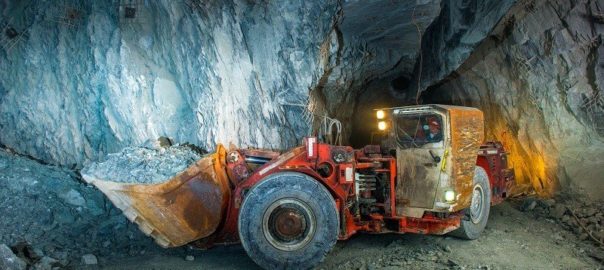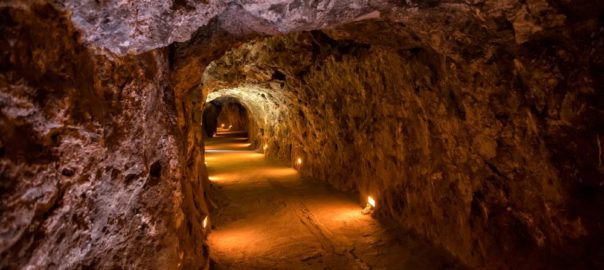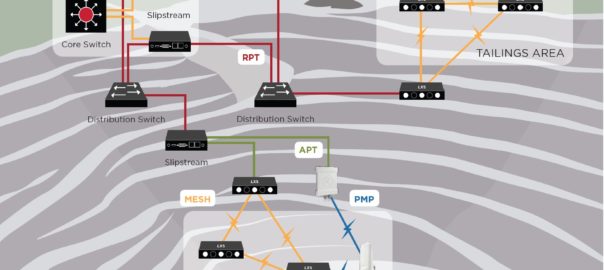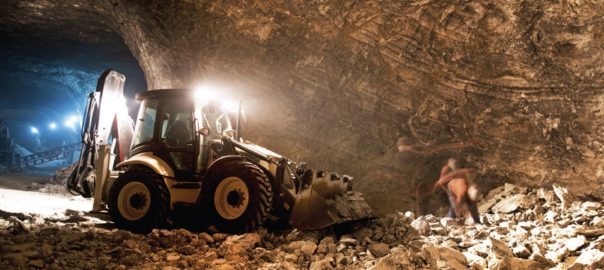Back in 2017 when it was soon expecting to commercially apply its mining truck haulage automation system, Hitachi Construction Machinery (HCM) made the bold claim that it had “commenced development of an autonomous haulage system (AHS) that will leapfrog over current market offerings”.
With trials of the technology at its first mine site concluded and the rollout of automated haulage in New South Wales, Australia, ramping up, HCM’s Adrian Hale, Business Development Manager – AHS, International Operations, Global Mining Group, and Greg Smith, General Manager – AHS Business Unit, Client Solutions Division, provided IM with a bit more information about HCM’s AHS technology, the third commercial offering from a mining OEM.
IM: How would you summarise the Hitachi approach to mining AHS versus others in terms of fundamental development, capability, and overall aims?
AH: Hitachi undertakes a broad investment to leverage group entities and technologies within the development of our AHS capability. This has resulted in formation of cross-entity teams, and adoption of technologies that have been applied in industries including high-speed rail to underpin command and control. It’s definitely a new and contemporary approach in delivering our Open Autonomy vision that extends value across all areas of the mining business. Our objective is to drive operational outcomes for our customers.
IM: What advantages do the wider capabilities within Hitachi Ltd, Wenco, etc bring to your AHS system? How easy was it to adapt systems designed for the rail and automotive groups, for example, for the mining AHS sector?
AH: Leveraging multi-industry capabilities from across Hitachi remains a foundation AHS development and this One Hitachi vision is driving the contemporary method of our ongoing investments. As mentioned earlier, adopting permission control technologies from Hitachi’s rail traffic control applications has delivered innovative efficiency in network communications and supports large scale fleet potential. In the case of Wenco, there remains a seamless integration of design and development team that has accelerated our AHS platform. This continues in terms of our objectives to lead Open Autonomy strategies.
IM: Comparisons are always going to be made between the major OEM providers of AHS: can you highlight some of the differences between your AHS systems and the likes of FrontRunner and Command for Hauling (LiDAR/RADAR differences, on-board/off-board computing power, truck speed restrictions, shovel interaction with AHS, etc)?
AH: Without a doubt there will be areas of difference in the baseline capabilities of all OEM AHS platforms. Command & control functions, sensor and technology integration, base truck engineering and design, as well as services methodologies and support delivery will all factor into these differences.
IM: What are the ‘entry’ requirements for Hitachi’s AHS system in terms of networks and connectivity? How has the Rajant wireless mesh network functionality enabled the Hitachi AHS to avoid the connectivity problems that have been an issue in deployments in the Pilbara (ie the trucks stopping and having to be manually restarted every time they lose connection)?
AH: We remain open on our supporting technologies and infrastructures and these elements remain a key focus of discovery as our regional development progresses. There is always a view to collaborate with our customers importantly to utilise already established assets wherever possible.
GS: One of the key advantages of the Hitachi Autonomous Solution is that autonomous haulage trucks (AHTs) can continue to operate on their assigned permitted path, despite intermitted loss of connection. The AHTs have the ability to navigate within their permitted path and bring themselves to a safe and controlled stop at the end of the assigned path, should the network not be re-established prior. Several safety layers above those linked to network stability are in place to ensure safe and efficient operation.
IM: I believe in a 2017 release, it was quoted that “limiting constant communication between the truck and the FMS, Hitachi’s autonomous technology was able to control up to 100 vehicles under the one system”. Is this the ‘ceiling’ in terms of the number of AHS haul trucks you expect to deploy on any one mine site?
AH: While we don’t perceive there would be ceiling limits, it is reasonable to acknowledge AHS fleet will have an optimal design utilisation within operations. This includes, of course, instrumented equipment that is not fully autonomous that has to have visibility within these areas.
IM: How do your TCS and Exclusive Permission Control functions differ to the traffic management and navigation procedures of other AHS systems? Does it enable your AHS system to reduce the number of false positive ODs (object detections) on mine sites?
AH: Without making direct comparison to other AHS solutions, integration of these systems and functions delivers optimised AHS fleet & network management. As a design principle, Hitachi AHS is a complex, contemporary ‘system of systems’ and that platform delivers these benefits.
IM: Outside of the obvious productivity and safety benefits your system will offer, what other external benefits are you expecting (fuel use, haul road degradation, tyre life, etc)?
AH: The basis of AHS technologies from a customer viewpoint reinforces the absolute need to deliver safety and compliance as #1, as well as productivity and efficiency benefits that would include optimisation of input cost areas. Hitachi has every expectation to meet market demand for reducing cost per tonne, optimising production, enabling grade control management and investing in workforce skilling for future mining. These priorities are also strengthened by our corporate sustainable development goal commitment and corporate social responsibility focus.
IM: Is your AHS focus likely to remain with the retrofit or ‘new’ market? Will the system likely become available for EH4000AC3 and EH3500AC3 trucks?
AH: Terminology in this space is quite fluid, regarding retrofit and new market. All Hitachi AC-3 rear dump trucks are designed for AHS and we can confirm the commissioning of these models is now in place. The assembly and commissioning of AHTs (ie on-board hardware) occurs wherever possible prior to customer delivery. Fleets that are already in operation at a customer site can be managed for retrofit without issue.
IM: Do the open architecture of the Wenco FMS and your wider DX initiatives mean you will be able to retrofit AHS on other truck manufacturers’ products in the long run?
AH: Hitachi’s continued R&D initiatives in the mining sector focuses on providing greater technology benefit across the value chain – not solely haulage. Our AHS market growth remains fixed at this time on our own fleet portfolio. Open Autonomy strategy ultimately provides choice and flexibility to the mining community.
IM: You have large haul truck fleets in important markets like Colombia, Zambia, and Indonesia. Is the business case for AHS as strong in these countries?
AH: Our clear priority remains on our commitments in Australia. Developing business value in other markets remains important to Hitachi and we will continue to engage in conversation with all customers.
IM: What can you say about the performance of the initial deployment of a fleet of six EH5000 AHS-enabled in commercial operation? How have these trucks performed compared with the test work you previously carried out on site?
AH: The current phase of deployment has produced ongoing and very encouraging results. Implementing within coal operations as well as the first AHS operation in NSW has also provided some great learnings – working with the customer teams, regulator and our multi-national implementation delivery model. Moving from test to production now validates the performance objectives we had established, and, as the fleet population meets its full size in AHS operation, further operational gains.
IM: How different is the AHS-enabled trucks Hitachi has compared with what you initially presented at Meandu (have any major elements changed)?
AH: There is a continuing investment in terms of engineering and development for our next-generation AHS capabilities, but aligning these priorities with strategic directions. Our supported AHS base truck fleet as deployed at Meandu remains our core platform but we are extending the EH class fleet models and ancillary supported fleet that operate within the autonomous zones.












